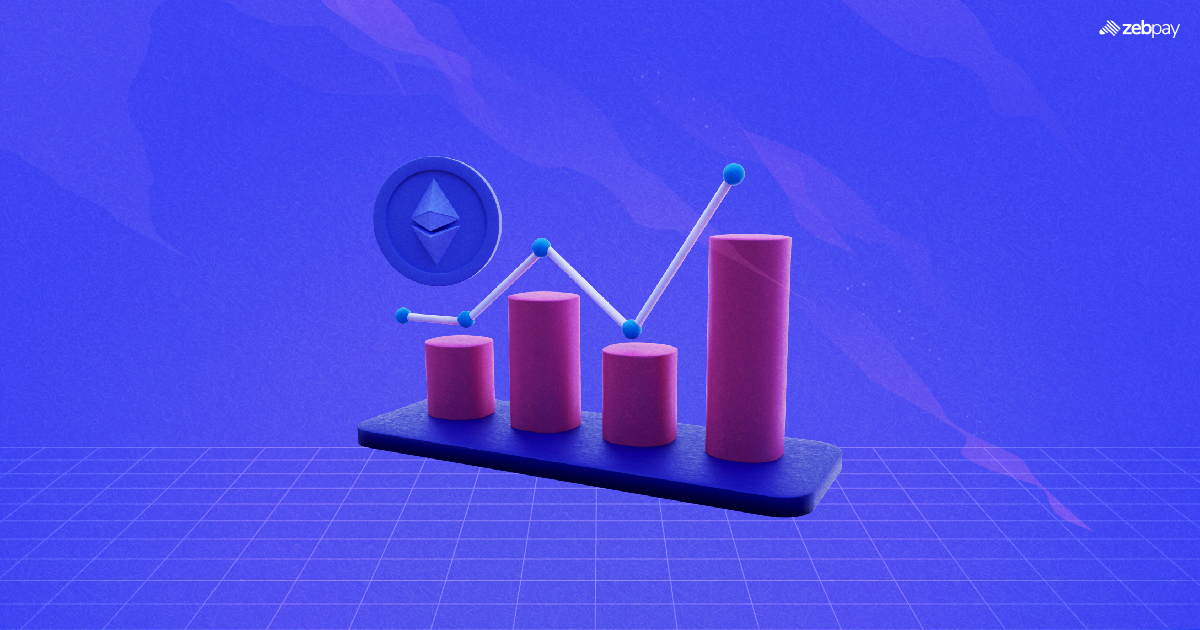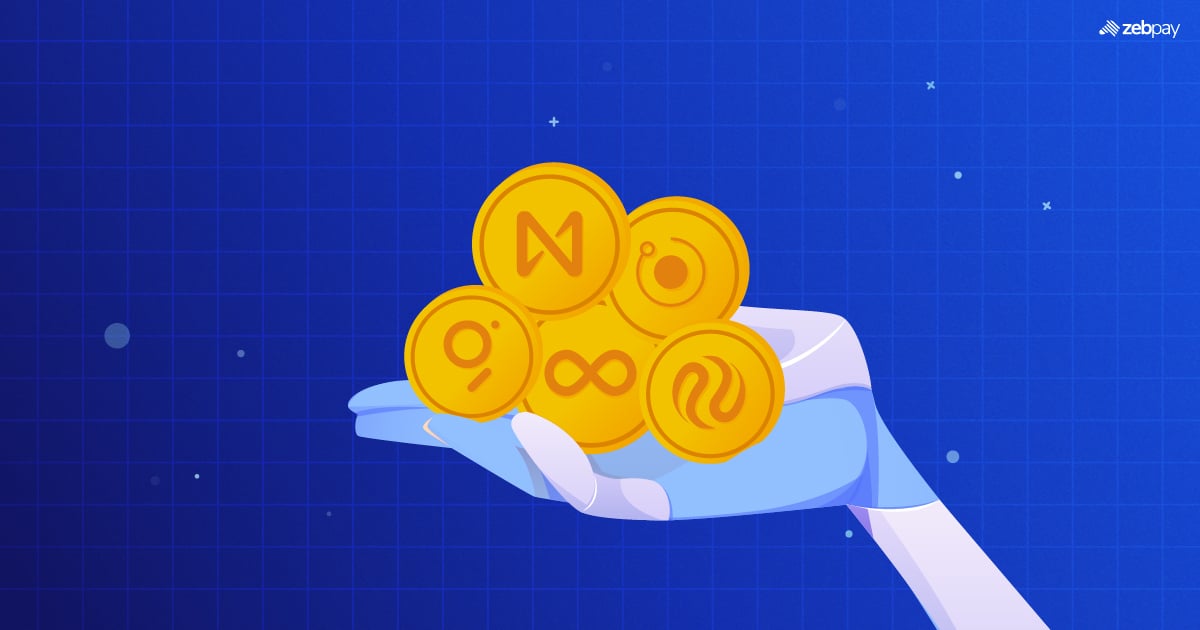Over recent years, crypto has emerged as a highly sought-after digital asset. Despite their increasing popularity, cryptos retain their characteristic volatility, rendering them ideal for trading purposes. Chart patterns serve as valuable tools for refining your crypto trading strategies. This guide aims to enhance your comprehension of prominent chart patterns relevant to crypto trading.
Understanding Chart Patterns
Charts give traders information on what buyers and sellers are doing. They show how many want to buy and how many want to sell in a picture. These pictures help experts know if bulls or bears are winning. Bulls want higher prices, and bears want lower prices. The charts help traders figure out how to invest. This works for short-term and long-term trading. Patterns can be seen quickly, over one day, or slowly, over many years. Traders look for them when planning buys and sells.
Charts have many uses. You can use them for fast, one-day trades. Or you can use them for slow, year-long investing. The patterns repeat whether you look daily, weekly, or monthly. The charts give insight into the bulls vs. bears war happening now in crypto. When bulls lead, charts show buying pressure. When bears lead, charts show selling pressure. Traders adjust based on what they see. Some patterns, like gaps and outside reversals, can form within a single trading session, while others, such as broadening tops and dormant bottoms, may take several months to develop.
Top Chart Patterns for Trading
Let’s take a closer look at the primary chart patterns used in crypto trading.
Head and Shoulders
The head and shoulders pattern, also known as the regular head and shoulders pattern, consists of three swing highs. Among these, the middle swing high is the highest, while the line connecting the two swing lows forms the neckline. This pattern is highly influential in trading.
In a bearish scenario, the left shoulder and the head create higher highs, indicating an ongoing upward trend. However, the right shoulder, by forming either a lower high or ending below the head, interrupts this bullish trend. A break below the neckline confirms a shift to a bearish trend. Thus, the head-and-shoulders pattern signifies a reversal in market direction. Its interpretation as bullish or bearish depends on its position within the market cycle.
Double Tops
This pattern has two peaks, about the same height. Between them is a dip that looks like an ‘M’. It often comes after prices rise for a while. This pattern signals a trend change, from up to down. Crypto traders sell when the price breaks below the support line. They do this after the pattern fully forms.
Double Bottoms
This chart has two low points. These dips are about the same depth. Between them is a rise that looks like a “W.”. This shape often happens after prices go down for a long time. It can mean that the downtrend is ending and an uptrend is starting. During the two upward movements, trading volume usually gets higher. These volume spikes strongly suggest upward price pressure and serve to confirm the validity of the double bottom pattern. In crypto trading, traders typically initiate a buy order when the price breaches the resistance line and fully forms this pattern.
Ascending Triangles
This chart pattern is characterized by two or more equal highs creating a flat line at the top, alongside two or more ascending troughs forming an upward-sloping line that intersects with the flat line. It commonly emerges during an upward market trend. A breakout usually happens along the trend’s path. Traders often buy when the price rises past the triangle’s top, plus more trades happen. After this breakout, the price often climbs as much as the triangle’s widest part.
Read more: What is Swing Trading
Descending Triangles
This particular chart pattern features two or more identical lows forming a flat line at the bottom, alongside two or more decreasing peaks forming a descending line that intersects with the flat line. This pattern commonly arises during a downtrend, signalling bearish sentiment. Crypto traders often initiate a position when the price breaks below the lower trendline of the triangle pattern, accompanied by heightened trading volume. This breakout typically leads to a price decrease equivalent to the widest part of the triangle pattern.
Symmetrical triangle
Symmetrical triangles are formations seen in markets lacking a distinct trend. In this phase of uncertainty, price highs and lows converge at the triangle’s apex with minimal trading activity. Crypto investors find it challenging to determine their positions during this period of indecision. However, once investors ascertain the market direction, it tends to move significantly either upward or downward with increased trading volume compared to the volume preceding the breakout. Traders often enter trades at the breakout point, aligning with the breakout’s direction, which usually continues the previous broader trend.
Flags and Pennants
In crypto trading, flags and pennants are short-term consolidation patterns that indicate a pause before the resumption of an earlier price trend. These formations typically occur following a rapid upward or downward movement, accompanied by significant trading volume. Flags are rectangular and run counter to the prevailing trend, suggesting a momentary pause in market activity. In contrast, pennants resemble small symmetrical triangles and signify a brief consolidation before continuing the initial price trajectory.
These patterns are highly valuable for crypto traders as they offer insights into potential future price movements. Traders often wait for a breakout, where the price surpasses the flag or pennant boundaries, to validate the pattern and anticipate the next significant price movement.
Cup and Handle
The cup and handle chart pattern occurs when an asset’s price reaches a specific level, retraces, and then returns to that level. Its name stems from its visual resemblance to a cup. This chart pattern is commonly associated with bullish reversals, although it can indicate either bullish or bearish signals depending on the crypto market cycle in which it appears.
Wedges
Wedges represent another type of triangle chart pattern. A rising wedge, classified as a bearish reversal pattern, forms when an asset’s price creates lower highs and higher lows. This formation indicates a likely continuation of the price decline and serves as a sell signal. Key characteristics of this pattern include the price forming lower highs and higher lows, encountering horizontal resistance at a specific price level, and appearing within a downtrend.
Conversely, a falling wedge denotes a bullish reversal pattern, opposite to the rising wedge. It materializes when the price chart displays higher highs and lower lows. A falling wedge typically signals a buying opportunity, suggesting that an uptrend is likely to persist. Signs to recognize this pattern include the asset forming higher highs and lower lows, encountering horizontal support, and emerging within an uptrend.
Read more: What is a Candlestick Pattern
Risk Management
Risk management plays a crucial role in crypto trading, especially when dealing with chart patterns. Despite the quality or prominence of a chart pattern, unforeseen circumstances can always arise. Therefore, having a robust risk management strategy in place is essential before initiating any trades, with room for adjustments as needed. Here are some key considerations:
- Implement a stop-loss order: This step is paramount in risk management as it helps limit potential losses if the trade moves against you.
- Utilize a take-profit target: Setting a take-profit target allows you to secure profits if the trade moves in your favour.
- Utilize a trailing stop: A trailing stop is an effective method to safeguard your profits, automatically selling your position if the price begins to decline.
- Carefully manage your position size: Properly sizing your positions is crucial to avoid risking too much of your account on a single trade.
Read more: How To Read Candlestick Patterns
Conclusion
Chart patterns help traders find crypto opportunities. Common types include head and shoulders, double tops and bottoms, ascending, descending, and symmetrical triangles. We discussed how each pattern works. We looked at their unique characteristics. Each crypto chart pattern presents various entry and exit points, contributing to profitable trading ventures. It’s crucial to examine each formation individually and identify the one that best aligns with your trading style.
If you found this blog to be useful, do share it with other like-minded crypto enthusiasts. Click on the button below to begin your crypto trading journey using ZebPay.







